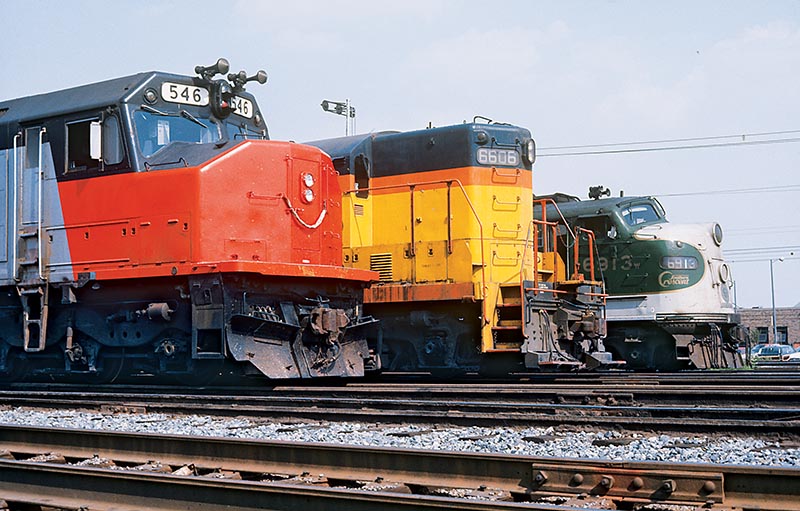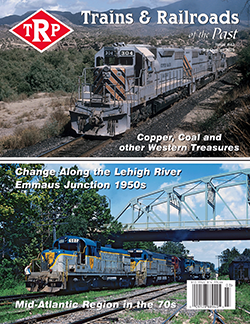 by Mike Small/photos by the author
by Mike Small/photos by the author
In 1976 and 1977, I made two significant photo trips to Washington, D.C. There also was a previous one in 1974, but I didn’t have a good camera then. On the 1977 trip I also visited Harrisburg, Pennsylvania, and stopped at several other places, as well. It allowed me to see a variety of electric locomotives up close.
My interest in Washington began in the 1950s when we took family vacations to the nation’s capital and as far as Baltimore, Md. With the earliest memories, I must have been no older than five. Although we were sightseeing, probably all I was really watching out for were trains. The first thing I remember was passing over a long concrete bridge in what must have been Roanoke, Va., and looking down to see all those magnificent locomotives exhaling steam and smoke into the air on the Norfolk & Western. I tried and strained, without success, to convince my parents and older brother of what I’d seen. They just kept saying, “There are no steam locomotives anymore.” But since we lived near Thomasville, N.C., and the Southern Railway Washington, D.C. – Atlanta, Ga., main line, that’s all they had to go on. Southern had discontinued steam in 1953, whereas N&W continued until 1960. It was many years later that I went across what was likely that same bridge. I think it’s the one right in front of the former Roanoke Shops of the railroad.
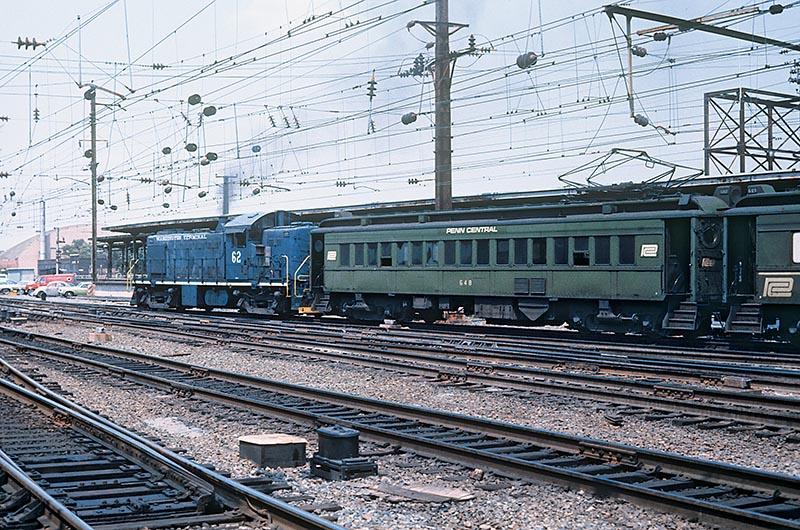
ABOVE: On the same day, Washington Terminal Alco RS-1 62 is switching elderly MP54 “Owl” commuter cars let-tered for Penn Central at the Washington Union Station platform area. The MP54’s were ex-Pennsylvania Railroad electric m.u.’s that were called “Owls” because of the large round windows on the ends of the cars.
I saw some long green streetcars and Baltimore & Ohio blue, gray, black and gold cab units in Washington. The B&O units were probably at the Ivy City engine terminal, which is just north of the passenger station. My favorite locomotives in Washington and that area were the Pennsylvania Railroad GG1 electrics. I saw them more than once and definitely saw two on a freight train. On the way to Baltimore, we were running along at highway speed paralleling a track and were suddenly overtaken and passed by a speeding B&O Budd RDC headed in the same direction. In Baltimore, I saw many cobblestone streets and the yellow streetcars of what I later learned was Baltimore Transit. I had never seen a trolley in operation before and what stood out in my mind were the large electric arcs shooting off the catenary after dark! An impression that you never forget.
Either coming or going we stopped in Luray, Va., to tour Luray Caverns. I saw what appeared to be a black and red locomotive. In my adult life I discovered that the Norfolk & Western stream-lined K2 4-8-2’s that operated on the line through here were the only engines that fit this description. If I actually saw one, my child’s mind wouldn’t have identified it as a steam locomotive because of its streamlined shrouding similar to the J class 4-8-4s.
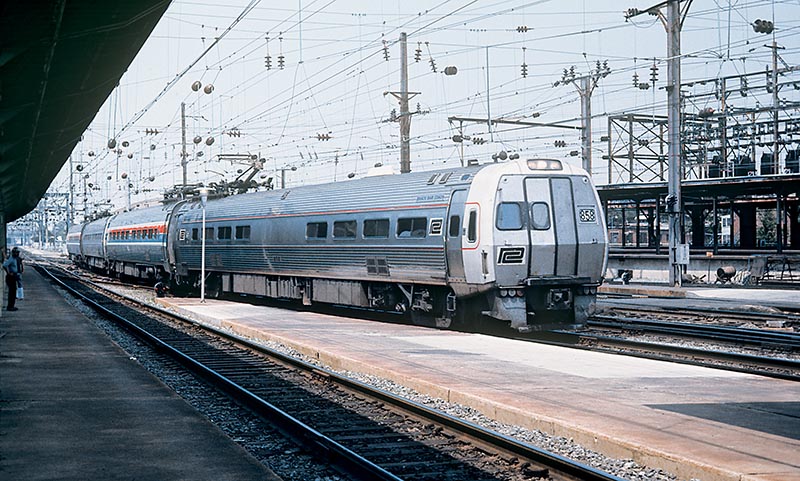
ABOVE: A Budd Metroliner is entering Washington Union Station with cars wearing both Penn Central and Amtrak markings. The red pinstripes are from the original scheme with a PRR keystone and it’s debatable as to whether they add any-thing to the Penn Central scheme. These cars look fast and were built for speed
Now, forward to the not-as-distant past of June 9, 1976. A railfan friend, Meinhardt Fishel, and I made this trip and even his wife, Genie, went along. Our first stop was at Washington Union Station. The reason for our trip was to get a close-up look at the southern end of the Amtrak Washington-New York Northeast Corridor main line, formerly owned and operated by the Pennsylvania Railroad. Washington Union Station was opened in 1907 and has a very attractive entrance with arches, columns and statues.
We entered the building and proceeded directly to the station platforms. Several blue Washington Terminal Alco RS-1s were working in the area shuffling passenger equipment. There were trains coming and going, including the Budd Metroliners, with some still having Penn Central lettering. From the first time that I saw pictures of the Metroliners I liked their design, especially the rounded sides, which became the pattern for the subsequent Amfleet cars.
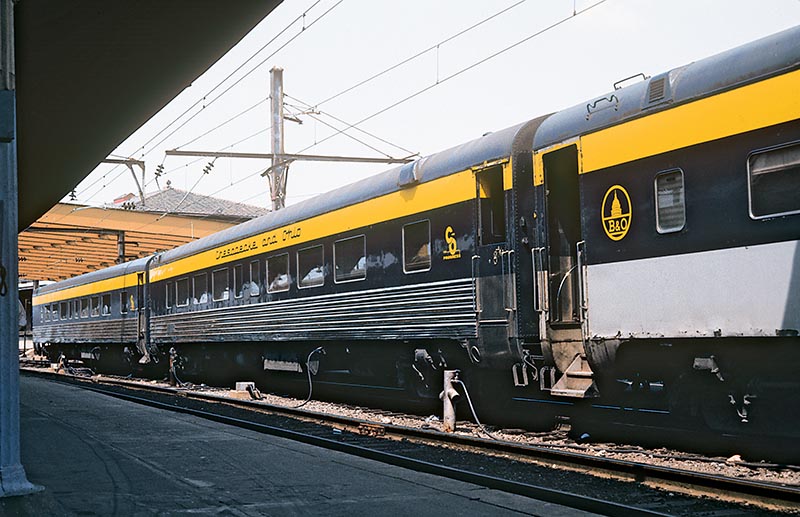
ABOVE: Chesapeake & Ohio and Baltimore & Ohio commuter equipment is parked at the Washington Union Station platforms on June 9, 1976. At this time, the Maryland Department of Transportation was already subsidizing these commuter operations that we now know as MARC. Might be more efficient today, but give me those B&O/C&O cars any day.
We also saw black GG1s and a few MP54 “Owl” commuter cars that were also handed down from the Pennsy. Some Baltimore & Ohio and Chesapeake & Ohio commuter equipment was on hand, too. I remember once when I first saw a GG1 up close. Something that no one had ever told me was that their drive wheels had spokes. I thought to myself, “This has to be from the steam era.” Also, the GG1’s were longer than you might have suspected, especially if you looked directly at one from the side and also if you compared them to the Lionel foreshortened version.
After spending time at the station, we moved up the line to the Ivy City engine terminal. This is where locomotives working in and out of Washington Union Station are serviced and stored until ready to go. At this time, we saw more GG1s, including a red, blue and silver Amtrak engine. The black ones were lettered for either Amtrak or Penn Central. I think the Penn Central-lettered units were either leased to, or actually owned by, Amtrak at that time. Various Amtrak E-units, SDP40Fs and the E60CP electrics were also populating Ivy City. Two Chessie System B&O commuter GP9s were there, along with the usual set of four Southern Crescent E8s in green, off-white, and gold. I was used to seeing the Southern Crescent engines, but only after midnight down in North Carolina.
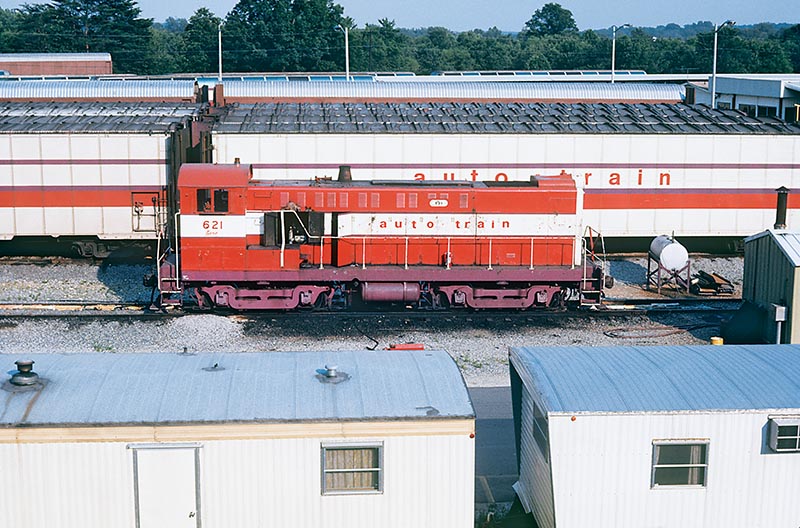
ABOVE: At the northern terminus of the Auto-Train route in Lorton, Va., Baldwin S12 621 “Gene” is present, along with a yard full of enclosed auto carriers and a string of domes in the background. The 621 was built for the Erie Railroad with the same number in 1952. It was folded into the Erie Lackawanna and picked up by Auto-Train in 1972. “Gene” refers to Eugene K. Garfield, founder of Auto-Train.
After our visit to Washington, we headed back into Virginia. I don’t remember whose idea it was, probably mine, but we stopped to have a look at the Auto-Train terminal at Lorton, Va., which was located 19 miles south of Washington, D.C., on the Richmond, Fredericksburg & Potomac. This was the original Auto-Train before the Amtrak version. Auto-Train carried passengers and their cars between Lorton and Sanford, Fla. The red, white, and purple equipment for the train was idle at the moment. It was late in the afternoon and I don’t know when the next scheduled departure was. First, we saw a set of four GE U36B’s led by 4000, “Big Red,” referring to either the diesels or the train itself, by SCL personnel. We also saw a yard full of rows of passenger cars, enclosed auto carriers and red-white-and-purple Baldwin switcher 621, “Gene.”
I had been familiar with Auto-Train for some time and have a couple of stories concerning the train. In 1974, I went with a couple of friends to Florida. On the way we sort of camped out one night in a parking lot at Hardeeville, S.C. I soon noticed that we were along the Seaboard Coast Line main. I was having some trouble sleeping and trains were passing through frequently. I finally went off through the trees, probably after midnight, to check things out. A headlight and gyrating Mars light soon appeared down a long stretch of straight track to the north. I was fully expecting to see a Seaboard Coast Line or Amtrak train. When the train got close enough to make things out there was the roar of four U36B locomotives and then everything in the long train of locomotives, passenger cars and auto carriers was red, white and purple from nose to tail. What a surprise in the middle of the night!
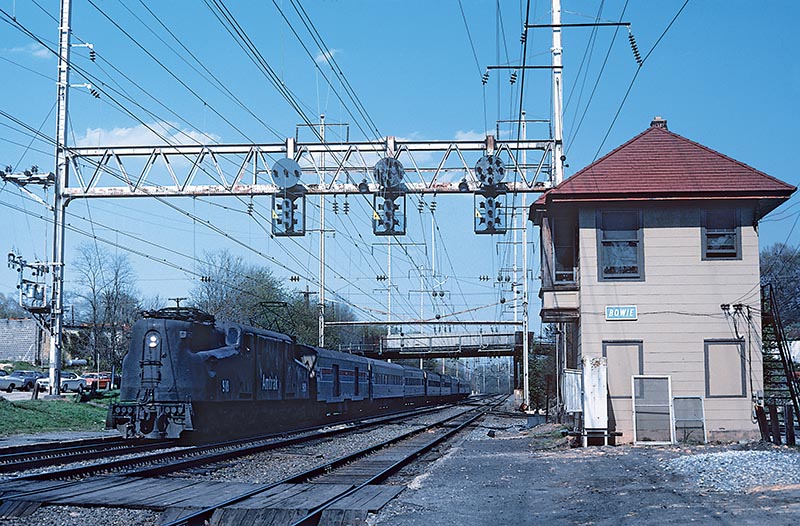
ABOVE: On April 14, 1977, a southbound train heading for Washington, D.C., behind Amtrak GG1 910 flies past the tower at Bowie, Md. Speeds were held to 80 mph in this area at this time because of, I think, the need for track improvements. This was the scene of my only tower visit ever.
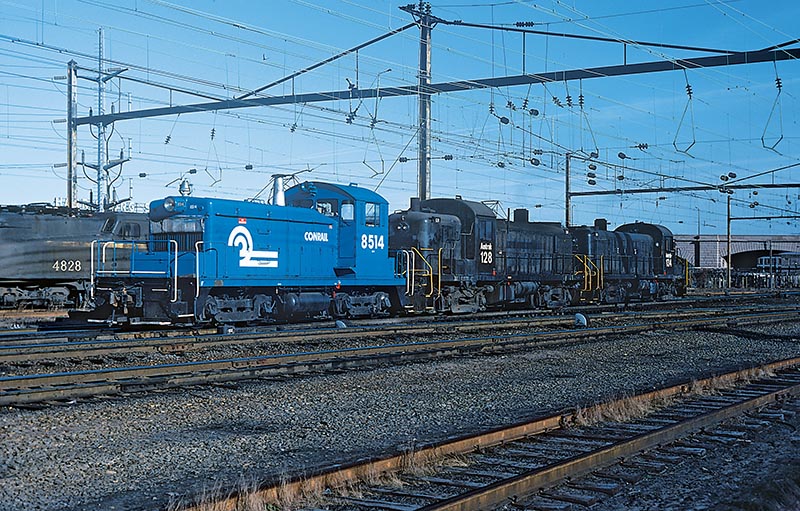
ABOVE: It’s somewhat incredulous that Conrail would eschew painting all the big road power seen in the earlier photo of that freight and instead spend the money on a 27-year old low-horsepower switcher… but that’s what they did, as shown by the ready-for-prime time SW1 8514 coupled to two former New York Central Amtrak RS-3s, 128 and 134, on April 15, 1977. And that has to be the shiniest bell on the railroad.


